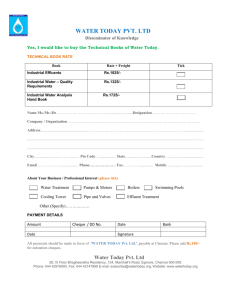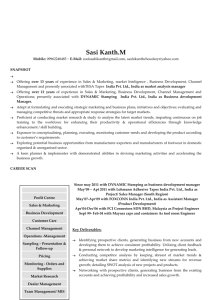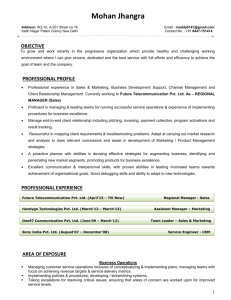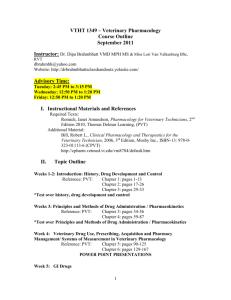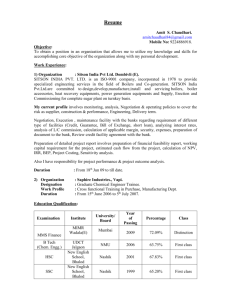George Mason University Private Pilot Aviation Weather Test
advertisement
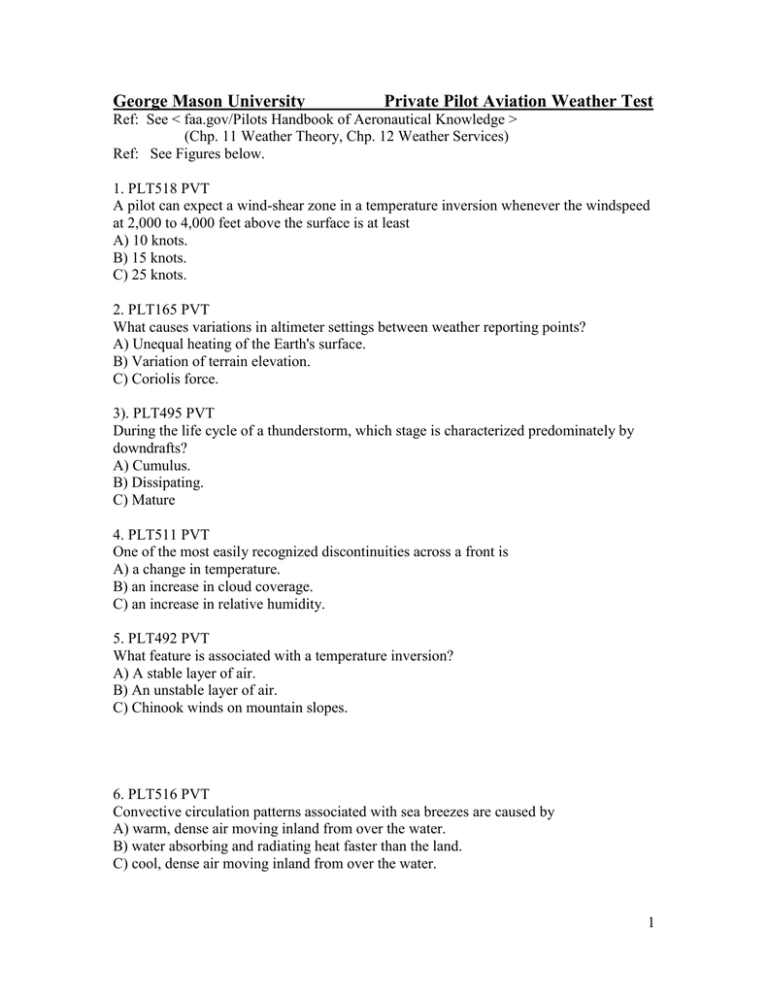
George Mason University Private Pilot Aviation Weather Test Ref: See < faa.gov/Pilots Handbook of Aeronautical Knowledge > (Chp. 11 Weather Theory, Chp. 12 Weather Services) Ref: See Figures below. 1. PLT518 PVT A pilot can expect a wind-shear zone in a temperature inversion whenever the windspeed at 2,000 to 4,000 feet above the surface is at least A) 10 knots. B) 15 knots. C) 25 knots. 2. PLT165 PVT What causes variations in altimeter settings between weather reporting points? A) Unequal heating of the Earth's surface. B) Variation of terrain elevation. C) Coriolis force. 3). PLT495 PVT During the life cycle of a thunderstorm, which stage is characterized predominately by downdrafts? A) Cumulus. B) Dissipating. C) Mature 4. PLT511 PVT One of the most easily recognized discontinuities across a front is A) a change in temperature. B) an increase in cloud coverage. C) an increase in relative humidity. 5. PLT492 PVT What feature is associated with a temperature inversion? A) A stable layer of air. B) An unstable layer of air. C) Chinook winds on mountain slopes. 6. PLT516 PVT Convective circulation patterns associated with sea breezes are caused by A) warm, dense air moving inland from over the water. B) water absorbing and radiating heat faster than the land. C) cool, dense air moving inland from over the water. 1 7. PLT134 PVT How will frost on the wings of an airplane affect takeoff performance? A) Frost will disrupt the smooth flow of air over the wing, adversely affecting its lifting capability. B) Frost will change the camber of the wing, increasing its lifting capability. C) Frost will cause the airplane to become airborne with a higher angle of attack, decreasing the stall speed. 8. PLT192 PVT The suffix 'nimbus,' used in naming clouds, means A) a cloud with extensive vertical development. B) a rain cloud. C) a middle cloud containing ice pellets. 9. PLT493 PVT Which conditions result in the formation of frost? A) The temperature of the collecting surface is at or below freezing when small droplets of moisture fall on the surface. B) The temperature of the collecting surface is at or below the dewpoint of the adjacent air and the dewpoint is below freezing. C) The temperature of the surrounding air is at or below freezing when small drops of moisture fall on the collecting surface. 10. PLT512 PVT What is the approximate base of the cumulus clouds if the surface air temperature at 1,000 feet MSL is 70 °F and the dewpoint is 48 °F? A) 4,000 feet MSL. B) 5,000 feet MSL. C) 6,000 feet MSL. 11. PLT026 PVT For aviation purposes, ceiling is defined as the height above the Earth's surface of the A) lowest reported obscuration and the highest layer of clouds reported as overcast. B) lowest broken or overcast layer or vertical visibility into an obscuration. C) lowest layer of clouds reported as scattered, broken, or thin. 12. PLT061 PVT (Refer to figure 14.) If the terrain elevation is 1,295 feet MSL, what is the height above ground level of the base of the ceiling? A) 505 feet AGL. B) 1,295 feet AGL C) 6,586 feet AGL. 2 13. PLT068 PVT (Refer to figure 20.) What weather is forecast for the Florida area just ahead of the stationary front during the first 12 hours? A) Ceiling 1,000 to 3,000 feet and/or visibility 3 to 5 miles with continuous precipitation. B) Ceiling 1,000 to 3,000 feet and/or visibility 3 to 5 miles with intermittent percipitation. C) Ceiling less than 1,000 feet and/or visibility less than 3 miles with continuous precipitation. 14. PLT076 PVT (Refer to figure 17.) What wind is forecast for STL at 9,000 feet? A) 230° true at 32 knots. B) 230° true at 25 knots. C) 230° magnetic at 25 knots. 15. PLT081 PVT (Refer to figure 16.) What sky conditon and visibility are forecast for upper Michigan in the eastern portions after 2300Z? A) Ceiling 1,000 feet overcast and 3 to 5 statute miles visibility. B) Ceiling 1,000 feet overcast and 3 to 5 nautical miles visibility. C) Ceiling 100 feet overcast and 3 to 5 statute miles visibility. 16. PLT290 PVT What is indicated when a current CONVECTIVE SIGMET forecasts thunderstorms? A) Moderate thunderstorms covering 30 percent of the area. B) Moderate or severe turbulence. C) Thunderstorms obscured by massive cloud layers. 17. PLT289 PVT (Refer to figure 18.) Of what value is the Weather Depiction Chart to the pilot? A) For determining general weather conditions on which to base flight planning. B) For a forecast of cloud coverage, visibilities, and frontal activity. C) For determining frontal trends and air mass characteristics. 18. PLT514 PVT To best determine general forecast weather conditions over several states, the pilot should refer to A) Aviation Area Forecasts. B) Weather Depiction Charts. C) Satellite Maps. 19. PLT445 PVT What should pilots state initially when telephoning a weather briefing facility for preflight weather information? A) Tell the number of occupants on board. 3 B) Identify themselves as pilots. C) State their total flight time. 20. PLT445 PVT What should pilots state initially when telephoning a weather briefing facility for preflight weather information? A) Tell the number of occupants on board. B) Identify themselves as pilots. C) State their total flight time. Fig. 14 4 Fig. 20 Fig. 17 5 Fig. 16 6 Fig. 18 STUDENT ANSWER SHEET: (Circle the correct answer) 1) (A) (B) (C) 2) (A) (B) (C) 3) (A) (B) (C) 7 4) (A) (B) (C) 5) (A) (B) (C) 6) (A) (B) (C) 7) (A) (B) (C) 8) (A) (B) (C) 9) (A) (B) (C) 10) (A) (B) (C) 11) (A) (B) (C) 12) (A) (B) (C) 13) (A) (B) (C) 14) (A) (B) (C) 15) (A) (B) (C) 16) (A) (B) (C) 17) (A) (B) (C) 18) (A) (B) (C) 19) (A) (B) (C) 20) (A) (B) (C) 8
